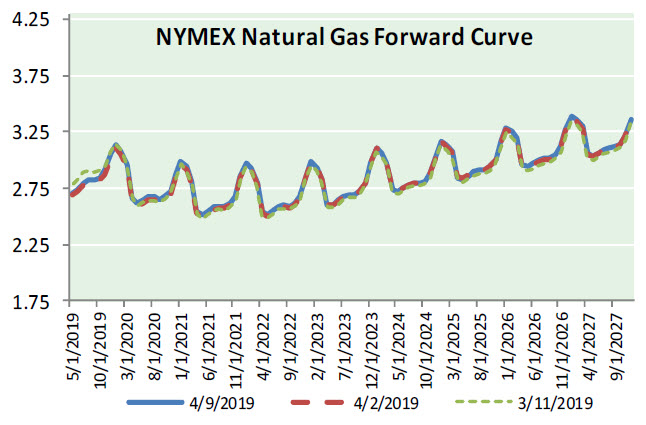
Natural Gas News – April 10, 2019
Natural Gas News – April 10, 2019
Explainer: Why are U.S. Natural Gas Prices in Texas Below Zero?
Reuters reported: In an unusual event, U.S. natural gas prices in West Texas have been trading in negative territory for more than two weeks, largely due to a lack of pipeline space, forcing some drillers to pay those with spare pipeline capacity to take unwanted gas. Spot prices at the Waha hub – where prices for gas in the Permian basin are set – fell to a record low of minus $4.28 per million British thermal units last week. Prices have been negative in the real-time or next-day markets since March 22. The Permian is the nation’s largest shale oil field, where production now exceeds more than 4 million barrels per day (bpd). But oil output also produces what is known as associated gas, seen by crude drillers as a waste product to be burned off or “flared” because there are not enough pipelines to remove it. For more on this story visit reuters.com or click https://reut.rs/2UpQ2gx
New England Curtails Amid World Natural Gas Boom
The Heartland Institute reported: Global usage of natural gas continues to grow rapidly. But states in New England, New York, and some nations seek to curtail the use of natural gas. From 1965 to 2017, world natural gas consumption increased almost six times, from 631 billion cubic meters to 3.7 trillion cubic meters per year. Gas use in North America doubled, increased in Europe by a factor of 14, and skyrocketed in Asia Pacific by a factor of more than 100. Gas became the primary fuel for heating and cooking in developed nations and a major fuel for industry and electricity generation across the world. In 2017, natural gas delivered 23 percent of the world’s energy, up from about 15 percent in 1965. Today gas provides nine times as much global energy as wind and solar combined. Natural gas, or methane, is a clean-burning fuel, free of nitrous oxides, sulfur dioxide, soot, and other pollutants. Water vapor is the largest waste product from methane combustion. But New England states have decided to curtail the use of gas to reduce greenhouse gas emissions. For more on this story visit heartland.org or click https://bit.ly/2P4Ah8Y
This article is part of Daily Natural Gas Newsletter
Tagged:
MARKET CONDITION REPORT - DISCLAIMER
The information contained herein is derived from sources believed to be reliable; however, this information is not guaranteed as to its accuracy or completeness. Furthermore, no responsibility is assumed for use of this material and no express or implied warranties or guarantees are made. This material and any view or comment expressed herein are provided for informational purposes only and should not be construed in any way as an inducement or recommendation to buy or sell products, commodity futures or options contracts.







